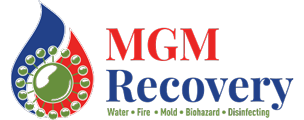 Understanding the basics of mold is critical in knowing when and how to handle it. Mold is a type of fungus that plays an essential role in breaking down organic matter in the environment. While mold is beneficial in nature, it can become a problem when it grows indoors. Mold reproduces by releasing tiny spores into the air, which can land on surfaces and begin to grow if the conditions are favorable. The industry standard for all restoration needs is found through the Institute of Inspection Cleaning and Restoration Certification. The standard for Mold Remediation is found in their ANSI/IICRC S520 Standard for Professional Mold Remediation.
Understanding the basics of mold is critical in knowing when and how to handle it. Mold is a type of fungus that plays an essential role in breaking down organic matter in the environment. While mold is beneficial in nature, it can become a problem when it grows indoors. Mold reproduces by releasing tiny spores into the air, which can land on surfaces and begin to grow if the conditions are favorable. The industry standard for all restoration needs is found through the Institute of Inspection Cleaning and Restoration Certification. The standard for Mold Remediation is found in their ANSI/IICRC S520 Standard for Professional Mold Remediation.
Mold Growth:
Mold requires a combination of factors to grow:
- Moisture: Moisture is a critical requirement for mold growth. It thrives in environments with elevated humidity levels or areas that have experienced water damage, leaks, or flooding.
- Organic Material: Mold feeds on organic materials such as wood, paper, fabric, and even some building materials like drywall. These materials provide a food source for mold to flourish.
- Warmth: Mold tends to grow well in temperatures ranging from around 77°F (25°C) to 86°F (30°C), although it can grow at lower temperatures as well.
- Stagnant Air: Poor ventilation and stagnant air can contribute to mold growth. Adequate airflow helps prevent moisture buildup, reducing the chances of mold colonization.
- Darkness: Mold can grow in both light and dark environments, but it tends to thrive in places where there’s limited sunlight or exposure to UV rays.
Mold in Florida and High Humidity:
Florida’s warm and humid climate makes it a prime breeding ground for mold. The state’s unique geographic location and weather patterns contribute to its high humidity levels, creating conditions that are conducive to understanding the basics of mold growth. Here’s why mold is particularly prevalent in Florida:
- High Humidity: Florida experiences high humidity levels throughout the year due to its proximity to the ocean and the Gulf of Mexico. Humidity levels often exceed 60%, providing ample moisture for mold growth.
- Warm Temperatures: Florida’s warm climate provides the necessary temperatures for mold to thrive. Warmth, coupled with high humidity, creates an ideal environment for mold spores to settle and grow on various surfaces.
- Frequent Rainfall and Storms: Florida is susceptible to heavy rainfall and tropical storms, which can lead to water intrusion and flooding. These events can create areas of excess moisture in buildings and homes, promoting rapid mold growth if not properly addressed.
- Poor Ventilation: The high humidity levels can lead to poor ventilation, especially in older buildings or those without proper air circulation. This lack of airflow can contribute to moisture accumulation indoors.
- Condensation: The contrast between indoor and outdoor temperatures in air-conditioned environments can lead to condensation on surfaces. Moisture from condensation can provide the moisture needed for mold to grow.
All in all understanding the basics of mold and that it thrives in moist environments and can become a problem when it grows indoors. Florida’s high humidity levels, warm temperatures, frequent rainfall, and poor ventilation make it a hotspot for mold growth. Homeowners in Florida need to be especially vigilant about moisture control, proper ventilation, and timely addressing of water-related issues to prevent mold from becoming a pervasive issue in their homes.
If you’re experiencing mold-related issues or simply want to ensure a healthy living or working environment, we encourage you to, contact MGM Recovery at 877-799-9987. Our team is ready to answer your questions, provide guidance, and schedule an assessment at your convenience.
